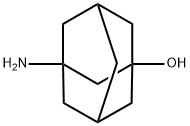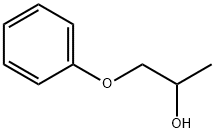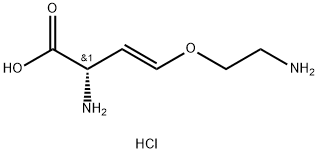3-Amino-1,2-propanediol
Synonym(s):1-Amino-2,3-propanediol;3-Amino-1,2-propanediol
- CAS NO.:616-30-8
- Empirical Formula: C3H9NO2
- Molecular Weight: 91.11
- MDL number: MFCD00008140
- EINECS: 210-475-8
- SAFETY DATA SHEET (SDS)
- Update Date: 2025-12-17 09:49:53

What is 3-Amino-1,2-propanediol?
Description
3-Amino-1,2-propanediol (APD) is a calcium metabolism regulator useful in the treatment of Paget's disease, tumor-induced hypercalcemia and other bone disorders involving increased osteoclastic activity.
Chemical properties
3-Amino-1,2-propanediol is a very viscous transparent colorless to pale yellow liquid with a melting point of 55-57 °C and a boiling point of 264-265 °C. The density at 25 °C is 1.175 g/mL. soluble in water.
Originator
Henkel (W. Germany)
The Uses of 3-Amino-1,2-propanediol
3-Amino-1,2-propanediol is used in the preparation of iohexol, which is a X-CT non-ionic contrast medium. It acts as a starting material in the production of specialty materials.
What are the applications of Application
3-Amino-1,2-propanediol is used as a reactant in the synthesis of lipid-like delivery molecules(lipidoids) for RNA interference (RNAi) therapeutics. It is also used in the synthesis of the bioactive template to prepare cationic α-helical polypeptides and various cationic polymers for gene delivery. It is also used in the synthesis of Decarbazolyl Carvedilol (D212720), a metabolite of Carvedilol (C184625) found in humans, rats, dogs and mice.
Preparation
3-Amino-1,2-propanediol is synthesized by reacting 3-chloro-1,2-propanediol (CPD) with ammonia in alkaline environment by adding sodium hydroxide. Afterwards, the product undergoes a series of purification steps.
What are the applications of Application
3-Amino-1,2-propanediol is used as a chiral selector ligand, used subsequently for a nucleophilic substitution with the dimethoxytrityl (DMT)-protected.
brand name
Aminomux
General Description
3-Amino-1,2-propanediol is a chiral glycerol derivative. It could used as a hydrogen bond donor in the design of a new deep eutectic solvent which have emerged as a suitable alternative to VOCs (volatile organic compounds) for diverse practical applications including, among others, drug delivery, electrochemistry, material design, extractions and, of course, organic reactions, alone or together twith other sustainable reaction-media[1]. It can also used as a core present in antiviral compounds to skeleton to design a novel class of anti-adenovirus agents[2].
Hazard
3-Amino-1,2-propanediol is Danger.
H314 (93.33%): Causes severe skin burns and eye damage [Danger Skin corrosion/irritation]
H318 (56.36%): Causes serious eye damage [Danger Serious eye damage/eye irritation]
Safety Profile
Poison by intraperitoneal route.Moderately toxic by ingestion. When heated todecomposition it emits toxic fumes of NOx.
Storage
3-Amino-1,2-propanediol absorbs moisture and needs to be kept in a container sealed. Store in cool, dry conditions in well-sealed containers.
References
[1] Antenucci A, et al. Design of a New Chiral Deep Eutectic Solvent Based on 3-Amino-1,2-propanediol and Its Application in Organolithium Chemistry. Molecules, 2022; 27.
[2] Mazzotta S, et al. Design, synthesis and in vitro biological evaluation of a novel class of anti-adenovirus agents based on 3-amino-1,2-propanediol. Bioorganic Chemistry, 2021; 114: 105095.
Properties of 3-Amino-1,2-propanediol
| Melting point: | 55-57 °C |
| Boiling point: | 264-265 °C739 mm Hg(lit.) |
| Density | 1.175 g/mL at 25 °C(lit.) |
| vapor pressure | <1 hPa (20 °C) |
| refractive index | n |
| Flash point: | >230 °F |
| storage temp. | Store below +30°C. |
| solubility | >1000g/l soluble |
| form | liquid (highly viscous) |
| pka | 12.11±0.35(Predicted) |
| Specific Gravity | 1.175 |
| color | Clear colorless to pale yellow |
| PH | 11 (100g/l, H2O, 20℃) |
| Water Solubility | soluble |
| Sensitive | Hygroscopic |
| BRN | 1719121 |
| CAS DataBase Reference | 616-30-8(CAS DataBase Reference) |
| NIST Chemistry Reference | 3-Amino-1,2-propanediol(616-30-8) |
| EPA Substance Registry System | 1,2-Propanediol, 3-amino- (616-30-8) |
Safety information for 3-Amino-1,2-propanediol
| Signal word | Danger |
| Pictogram(s) |
 Corrosion Corrosives GHS05 |
| GHS Hazard Statements |
H314:Skin corrosion/irritation |
| Precautionary Statement Codes |
P280:Wear protective gloves/protective clothing/eye protection/face protection. P363:Wash contaminated clothing before reuse. P303+P361+P353:IF ON SKIN (or hair): Remove/Take off Immediately all contaminated clothing. Rinse SKIN with water/shower. P305+P351+P338:IF IN EYES: Rinse cautiously with water for several minutes. Remove contact lenses, if present and easy to do. Continuerinsing. P405:Store locked up. |
Computed Descriptors for 3-Amino-1,2-propanediol
| InChIKey | KQIGMPWTAHJUMN-UHFFFAOYSA-N |
3-Amino-1,2-propanediol manufacturer
JSK Chemicals
New Products
4,4-Difluoropiperidine hydrochloride tert-butyl 9-methoxy-3-azaspiro[5.5]undecane-3-carboxylate Indole Methyl Resin N-Isopropylurea N,N-Dicyclohexylcarbodiimide(DCC) MELDRUMS ACID 5-METHYLISOXAZOLE-4-CARBOXYLIC ACID Magnessium Bis glycinate Zinc ascorbate 1-bromo-2-butyne 2-acetamidophenol 9(10H)-anthracenone Erythrosin B, 4-Piperidinopiperidine 2-((4-morpholinophenylamino) (methylthio) methylene) malononitrile 2,4-dihydroxybenzaldehyde 3-(4-morpholinophenylamino)-5-amino-1H-pyrazole-4-carbonitrile Methyl 2-methylquinoline-6-carboxylate 2,6-dichloro-4-nitropyridine 4-Bromo-2-chlorobenzonitrile 2-(benzylamino)acetic acid hydrochloride 4-(tert-Butoxycarbonylamino)but- 2-ynoic acid 3,4-dihydro-2H-benzo[b][1,4]dioxepine 1-Phenyl-1-cycloprppanecarboxylicacidRelated products of tetrahydrofuran








You may like
-
 616-30-8 3-Amino-1,2-propanediol (Isoserinol) 99%View Details
616-30-8 3-Amino-1,2-propanediol (Isoserinol) 99%View Details
616-30-8 -
 616-30-8 98%View Details
616-30-8 98%View Details
616-30-8 -
 616-30-8 3-Amino-1,2-propanediol (APD) >98%View Details
616-30-8 3-Amino-1,2-propanediol (APD) >98%View Details
616-30-8 -
 (±)-3-Amino-1,2-propanediol, 98% 99%View Details
(±)-3-Amino-1,2-propanediol, 98% 99%View Details
616-30-8 -
 3-Amino-1,2-propanediol CAS 616-30-8View Details
3-Amino-1,2-propanediol CAS 616-30-8View Details
616-30-8 -
 (±)-3-Amino-1,2-propanediol CAS 616-30-8View Details
(±)-3-Amino-1,2-propanediol CAS 616-30-8View Details
616-30-8 -
 3-Amino-1,2-propanediol CAS 616-30-8View Details
3-Amino-1,2-propanediol CAS 616-30-8View Details
616-30-8 -
 20677-73-0 (2,2-diethoxyethyl)methylamine 98%View Details
20677-73-0 (2,2-diethoxyethyl)methylamine 98%View Details
20677-73-0
